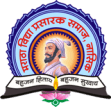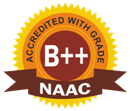SSR Profile
SSR Extended Profile
Criterion :
7 Institutional Values and Best Practices Section
7.1: Institutional Values and Social Responsibilities
7.1.2: Institution shows gender sensitivity
7.1.9: Differently abled (Divyangjan) Friendliness Resources available in the institution
7.1.12: Code of conduct handbook exists for students, teachers, governing body, administration including Vice Chancellor / Director / Principal /Officials and support staff
7.1.14: The institution plans and organizes appropriate activities to increase consciousness about national identities and symbols; Fundamental Duties and Rights of Indian citizens and other constitutional obligations
7.1.17: Number of activities conducted for promotion of universal values (Truth, Righteous conduct, Love, Non-Violence and peace); national values, human values, national integration, communal harmony and social cohesion as well as for observance of fundamental duties during the last five years
7.1.19: The institution maintains complete transparency in its financial, academic, administrative and auxiliary functions
7.2 Best Practices

